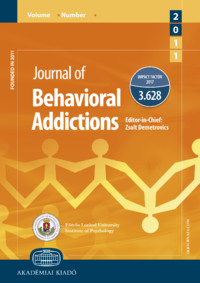Proposed diagnostic criteria for compulsive buying-shopping disorder: A Delphi expert consensus study
Proposed diagnostic criteria for compulsive buying-shopping disorder: A Delphi expert consensus study
Author(s): Astrid Müller, Nora M. Laskowski, Patrick Trotzke, Kathina Ali, Daniel B. Fassnacht, Martina De Zwaan, Matthias Brand, Michael Häder, Michael KyriosSubject(s): Behaviorism
Published by: Akadémiai Kiadó
Keywords: compulsive buying-shopping disorder; compulsive buying; diagnostic criteria; Delphi study; behavioral addiction; impulse control disorder
Summary/Abstract: Consensus in acknowledging compulsive buying-shopping disorder (CBSD) as a distinct diagnosis has been lacking. Before research in this area can be advanced, it is necessary to establish diagnostic criteria in order to facilitate field trials. Methods. The study consisted of the following phases: (1) operationalization of a broad range of potential diagnostic criteria for CBSD, (2) two iterative rounds of data collection using the Delphi method, where consensus of potential diagnostic criteria for CBSD was reached by an international expert panel, and (3) interpretation of findings taking into account the degree of certainty amongst experts regarding their responses. Results. With respect to diagnostic criteria, there was clear expert consensus about inclusion of the persistent and recurrent experience of (a) intrusive and/or irresistible urges and/or impulses and/or cravings and/or preoccupations for buying/shopping; (b) diminished control over buying/shopping; (c) excessive purchasing of items without utilizing them for their intended purposes, (d) use of buying-shopping to regulate internal states; (e) negative consequences and impairment in important areas of functioning due to buying/shopping; (f) emotional and cognitive symptoms upon cessation of excessive buying/shopping; and (g) maintenance or escalation of dysfunctional buying/shopping behaviors despite negative consequences. Furthermore, support was found for a specifier related to the presence of excessive hoarding of purchased items. Conclusions. The proposed diagnostic criteria can be used as the basis for the development of diagnostic interviews and measures of CBSD severity.
Journal: Journal of Behavioral Addictions
- Issue Year: 10/2021
- Issue No: 2
- Page Range: 208-222
- Page Count: 15
- Language: English

